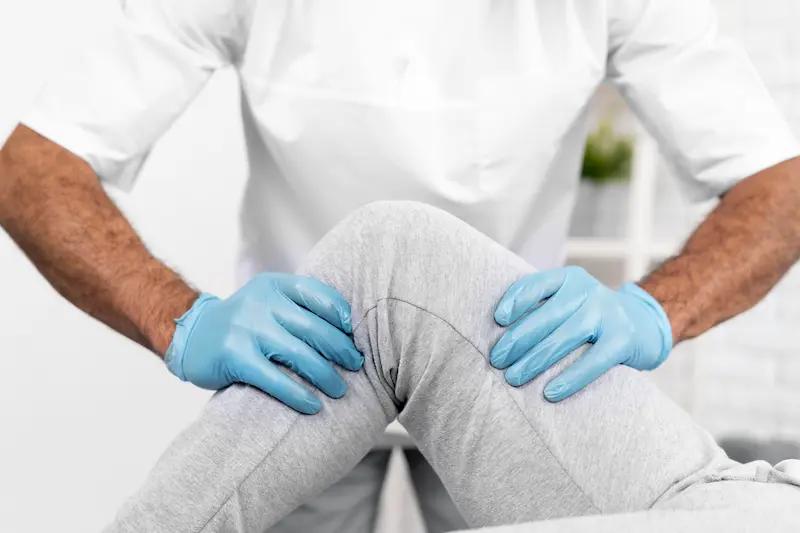
Expert Care forJoint Health
Comprehensive orthopedic evaluation and treatment from experienced specialists dedicated to restoring your mobility and comfort.
10k+
Successful Surgical Procedures
25+
Years of Experience
6+
Specialized Care Areas
Specialized Care Areas
Comprehensive care for every stage of recovery in orthopedic treatments and rehabilitation

Knee
We provide comprehensive specialized care for injuries and conditions affecting the knee joint, ligaments, cartilage, muscles & bones around.

Shoulder
We provide comprehensive specialized care for injuries and conditions affecting the shoulder joint, ligaments, cartilage, muscles & bones around.

Ankle
We provide comprehensive specialized care for injuries and conditions affecting the ankle joint, ligaments, cartilage, muscles & bones around.

Hip
We provide comprehensive specialized care for injuries and conditions affecting the hip joint, ligaments, cartilage, muscles and bones around.

Elbow
We provide comprehensive specialized care for injuries and conditions affecting the elbow joint, ligaments, cartilage, muscles and bones around.

Wrist
We provide comprehensive specialized care for injuries and conditions affecting the wrist joint, ligaments, cartilage, muscles & bones around.
Why Choose Sports Orthopedics?
Experience dedicated care focused on your well-being and recovery.
Putting you first
We treat all our patients equally and humanely with individual care and attention.
Vast Pool of Experience
We have extensive experience treating patients across multiple regions and are continually updating our knowledge through participation in global conferences and training.
Accurate Diagnosis
We strive to achieve the correct diagnosis with minimal investigations to ensure effective treatment planning.
Interactive Session
We believe in empowering our patients with clear information about their condition and treatment options, making them active participants in their healthcare journey.
Dedicated to Excellence in Orthopedic Care
At Sports Orthopedics Institute, we are committed to providing exceptional orthopedic care with a focus on sports medicine and rehabilitation. Our team of skilled specialists combines years of experience with cutting-edge techniques to deliver personalized treatment plans.
Whether you're recovering from an injury, managing chronic pain, or seeking to improve your mobility and performance, our comprehensive approach addresses your specific needs and goals.


Dr. Naveen Kumar L.V
MBBS, MS Orth (India), FRCS Orth (Eng), MCh Hip & Knee (UK), MSc Orth (UK), Dip SICOT (Italy), FEBOT (Portugal), MRCGP (UK), Dip FIFA SM (Switzerland) (FSEM (UK))
Dr. Naveen, a globally acclaimed orthopedic surgeon, is the Chief of Orthopedics & Sports Medicine at Manipal Hospital. With 24+ years of experience, numerous international qualifications, and fellowships, he specializes in advanced arthroscopy, arthroplasty, and trauma care.
Dedicated to excellence, he sees over 80 patients daily and performs thousands of complex surgeries annually, alongside contributing to anonymous charitable work.
Affiliations & Partnerships
Proudly associated with leading institutions and organizations.


Common Questions About Our Services
Find answers to the most common questions about our orthopedic treatments and procedures
You can schedule an appointment by using our online booking system, calling our office directly, or sending us an email. Our staff will help you find the most convenient time for your visit.
We accept most major insurance plans including Medicare and private health insurance. Please contact our office to verify if your specific plan is accepted.
Please bring your insurance card, a form of identification, a list of current medications, and any relevant medical records or imaging from previous providers. Wearing comfortable clothing that allows easy examination of the affected area is also recommended.
We treat a wide range of orthopedic conditions including sports injuries, joint pain, fractures, arthritis, spine disorders, and more. Our specialists are experienced in treating conditions affecting all major joints and muscles.
Yes, we offer many non-surgical treatment options including physical therapy, medication management, injections, and minimally invasive procedures. Our goal is to explore all appropriate conservative options before considering surgery.
Don't see your question here? Contact us directly for more information.
Contact UsReady to Start Your Recovery Journey?
Schedule an appointment with our specialists and take the first step towards better mobility and comfort.